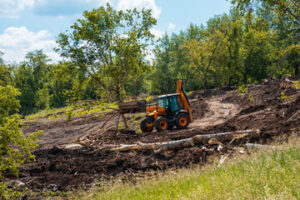Baker Estate Sales Springfield MO allow family members to honor the memory of a deceased loved one by allowing others to enjoy their possessions. Oftentimes, these items will go to auction rather than being thrown away.

The day of the sale usually starts with passionate buyers lined up outside, eager to discover unique curiosities or specialized goods. Most estate sales are organized by a company that specializes in these types of events.
Streamlining the property clearing process during estate sales can make the entire experience more manageable and less stressful. For sellers, it can provide a strategic way to convert household items into cash quickly and efficiently. It can also help them prepare for moving or downsizing, enabling them to free up space and move on to a new chapter of life with ease. For buyers, it can offer a unique opportunity to find rare treasures or second-hand gems, as well as save money on the cost of items they may have been planning to buy anyway.
Typically, estate sales are arranged to facilitate major changes in circumstances like relocation, downsizing or the death of a family member. Professional companies organize these sales to ensure a systematic process that includes appraising items, setting up the sale and managing transactions. They can also help with determining fair market value, which is the price at which an item would change hands between informed, willing parties in an open marketplace.
In addition to facilitating the liquidation of possessions, estate sales can also serve as a meaningful way to honor loved ones and celebrate their legacy by distributing sentimental items to new homes. These items may be items of high monetary value or ones that have deep personal meaning to the seller. Some of these items may even be heirlooms that were gifted or inherited from loved ones, giving them a second life that is important to the seller’s family.
While many people enjoy attending estate sales to seek out valuable items and bargains, the liquidation process can often be a very emotional one for sellers. Whether it’s because of the passing of a family member, or their own move to a new living situation, it can be difficult to part with the items that have been an integral part of their lives.
It’s important to be realistic about the outcomes of an estate sale and understand that not all items will sell at their appraised values. Some may even be left unsold, and it’s critical to establish clear guidelines for disposing of leftover items in advance. This can help sellers and attendees avoid confusion and frustration over unclear expectations. In some cases, these items can be donated or placed on consignment, so they can still find a home that’s a good fit for them.
Streamlining the Decluttering Process
Estate sales provide an opportunity to transform unwanted possessions into a valuable resource. They allow individuals to clear clutter, connect with buyers, and honor cherished memories. However, they require thorough preparation and management to maximize profitability and efficiency. A methodical approach to planning, appraisals, and marketing fosters a smooth and enjoyable experience for both sellers and shoppers. In addition, effective logistics on the day of the sale ensures safety and a seamless experience. Addressing unsold items post-sale can also streamline the process and align with financial goals.
Streamlining the estate sale process involves establishing clear objectives and setting realistic timelines, factoring in preparation tasks like sorting and pricing. It also includes determining which items will be sold, and which will be donated or recycled. It’s essential to keep in mind that shoppers will purchase just about anything, from Tupperware and linens to furniture and collectables. This makes it important to take inventory and categorize all belongings, so they can be properly sorted and priced.
Successful estate sales are often marketed through online platforms and local ads, which help increase visibility and drive attendance. The effective use of signage and attractive displays facilitates a smooth shopping experience for customers, while highlighting high-value or unique pieces increases sales potential.
The estate sale process also requires implementing security measures to protect personal property and ensure a safe environment for all shoppers. Vigilant monitoring helps prevent theft, while limiting access to non-sale areas reduces the risk of accidents and injuries. It’s also advisable to hire security personnel for higher-value collections or large crowds.
Estate sales can be challenging for both sellers and their loved ones. If the sale is prompted by the death of a family member, it’s especially important to plan carefully and consider sentimental items. Taking the time to distribute these items amongst family members may prevent disputes and ensure that cherished memories are preserved for future generations. In addition, deciding to sell or donate sentimental items early in the process can save time and stress. In some cases, it’s even a good idea to have the deceased person’s will specify their distribution prior to the sale, ensuring that their wishes are carried out in an efficient and meaningful manner.
Creating Space
When organizing a property for an estate sale, it is important to create space. This includes cleaning the house thoroughly and removing items that will not be sold. This makes the process of liquidating the estate quicker and more efficient. It also creates a safer and more pleasant environment for buyers.
Another key factor in preparing for an estate sale is making sure that all items are priced correctly. According to Ruby, over-priced items can deter potential customers and lead to frustration and disappointment. When setting prices, it is important to consider the market value of similar items in the area and compare them to current sales on platforms like eBay. It is also helpful to reference completed estate sales in the past for insight into pricing strategies that are effective.
A well-organized and inviting setup attracts buyers and facilitates smoother browsing, ultimately boosting sales success. Proper lighting enhances visibility and highlights featured items. Strategically placing signs and arrows help shoppers navigate the space, and attractive displays draw attention to unique or high-value items. Managing transactions efficiently includes establishing a payment area and ensuring that the necessary tools are available to manage cash and credit payments. It is helpful to have multiple people involved in the transaction handling process, including one person collecting cash and another counting it, to minimize the risk of errors or theft.
An effective negotiation strategy is essential for maximizing sales at an estate sale. By listening to the needs of the buyer and finding a mutually agreeable solution, sellers can close deals quickly and easily. For example, if a buyer is hesitant to purchase an item due to price, offering a small discount or including additional items at a lower cost can be enough to seal the deal.
Whether downsizing or settling the estate of a loved one, estate sales offer an effective way to clean out a home and make room for new possessions. By taking a methodical approach to the process, individuals can transform it from a stressful or upsetting endeavor into an opportunity to connect with the community and honor memories.
Organizing Your Possessions
Estate Sales provide a unique opportunity for thrifty shoppers to find items for a fraction of their retail cost. Items often include furniture, home décor and kitchenware in good condition. Other popular finds include rare collectibles and memorabilia, as well as tools and equipment like lawnmowers, electronics, and outdoor gear. Organizing and staging these goods in an appealing manner can help them sell quickly.
To draw in buyers, estate sale organizers should advertise broadly and clearly. Brightly colored signs should display the dates, times, and address of the sale. Advertisements may also appear in local newspapers or online. A clear price tag is essential, and sellers should be sure that values reflect both item worth and local interest. A professional appraisal can be useful to establish a fair value.
Most estate sales take place over a 2-3 day period, and shoppers may line up to gain entry. While this can be inconvenient for many shoppers, it’s a great way to manage crowds and ensure that only those with genuine interest are allowed in. Once inside, estate sale shoppers can browse the merchandise and purchase what they’re interested in.
Estate sale pricing is typically based on resale value and market demand, with discounts offered as the sale progresses. This helps sellers move merchandise and also provides a good return on investment for their time and energy. During the final day of an estate sale, it’s common to see items reduced by 50%-60% or more.
When it comes to facilitating transactions, the most successful estate sales offer multiple payment options and a secure checkout area. Cash, credit cards, and digital payments are commonly accepted, and a team of volunteers can mingle throughout the property to assist buyers. Be sure to provide a clearly marked checkout area, and make it easy for shoppers to locate the location of your payment station.
Whether you’re downsizing your family’s possessions or dealing with the estate of a loved one, an organized approach can make the process much easier and faster. Contact a professional estate sale company to learn more about how they can help.
